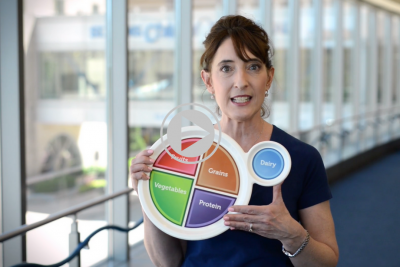“Your child’s injury may involve the growth plate.” This is a common phrase used particularly in urgent care when describing a bony injury in kids. For a good reason, this phrase can be quite worrisome to parents because we all want our children to reach their full growth potential and not have problems with their bones as they approach adulthood. The good news is that most injuries that do involve the growth plate will not result in long-term problems, but it is definitely something to keep in mind if your child has an injury or pain before they are fully mature.
Growth plates (physes/apophyses) are everywhere in the bones as kids are growing. It is an area of the bone that is made up of cartilage and cells that help lengthen or shape the bone as kids grow. This area tends to be weaker than the surrounding bone, which makes it more likely to get injured. This is particularly true when a young athlete is in a growth spurt. During periods of rapid growth, these growing areas are even more likely to be injured than at baseline.
3 Types of Growth Plate Injuries
Injuries to the growth plate can be broken down into three groups:
- Acute: These tend to happen from an injury like a fall, a twist, or a direct hit to the bone. About 15% of fractures (breaks) involve the growth plate, and many occur when playing sports. These acute injuries can be mild or severe, and the severity will determine how closely your child will need to be followed for growth issues.
- Chronic: These tend to happen from overtraining or doing too much of the same activity. Putting the same stress on a growth plate repeatedly without enough rest and recovery time can lead to pain. A common example is “Little League Shoulder or Little League Elbow.” Throwing a ball repeatedly can lead to irritation of the growth plate in the shoulder or elbow, leading to pain and making it hard to throw.
- Apophyseal: An apophysis is a growth plate that shapes the bone but doesn’t make it longer. Injuries to these areas can be acute or chronic. Examples are Osgood-Schlatter (pain on the bump just below the knee) or Severs (pain in the heel’s growth plate). These injuries are less likely to cause long-term issues with growth, but they can be very painful and limiting to a young athlete’s activities.
Your child’s doctor can assess your child’s injury and determine the level of risk for the growth plate and what effect it may have on future growth. Fractures or injuries that involve or disrupt the growth plate will likely be followed closely with x-rays to make sure that growth continues appropriately.
The most important thing to remember is that if your young athlete is having pain while playing sports and it isn’t getting better with the usual treatments like rest, ice, anti-inflammatories, then it is worth a visit to your pediatrician or sports medicine doctor for further evaluation. Acute injuries that cause pain and swelling should also be closely evaluated by an ER physician, urgent care, or orthopedist to determine treatment and to see if continued evaluation at the growth plate is needed.






Comments